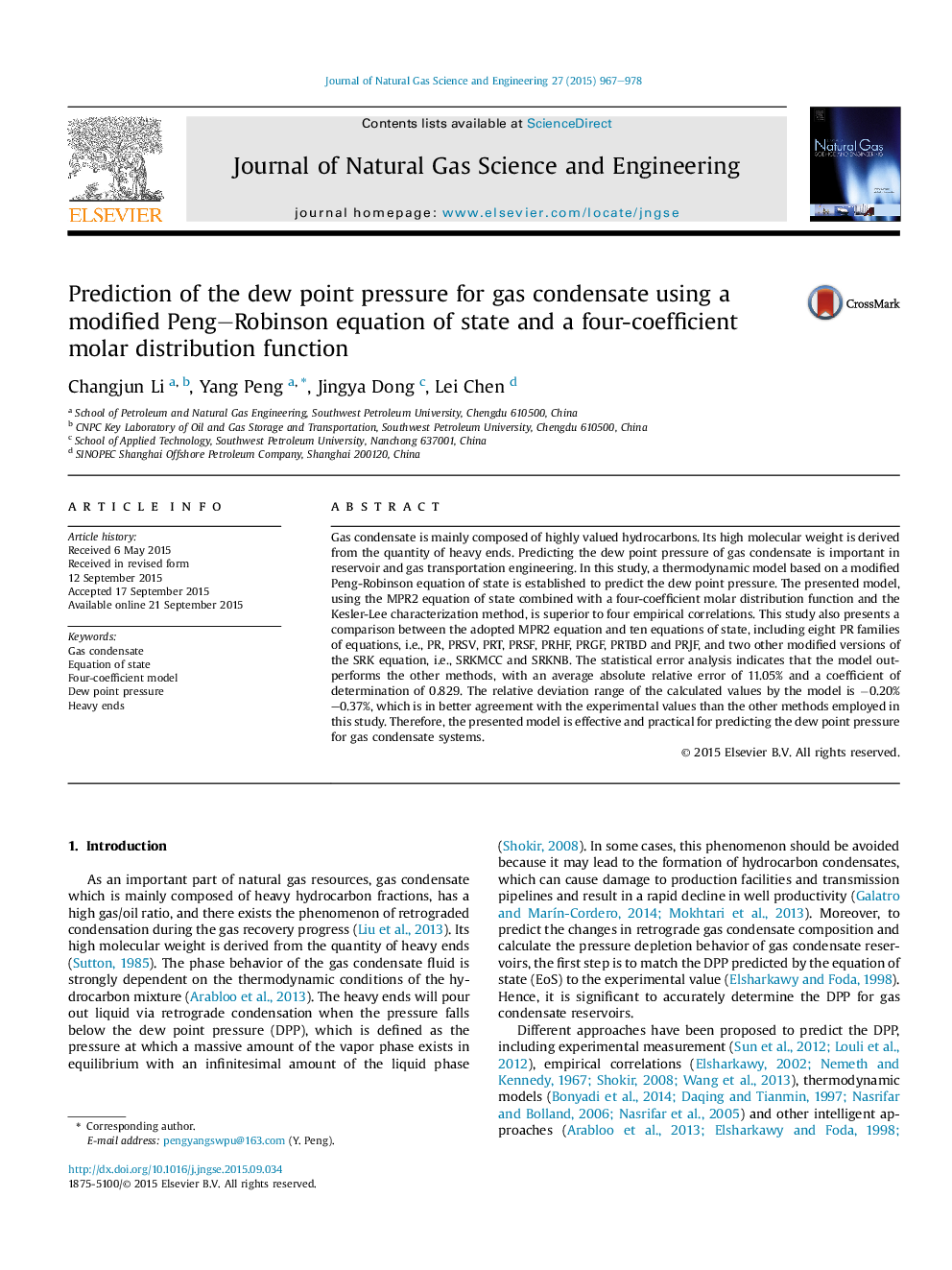| کد مقاله | کد نشریه | سال انتشار | مقاله انگلیسی | نسخه تمام متن |
|---|---|---|---|---|
| 1757644 | 1019129 | 2015 | 12 صفحه PDF | دانلود رایگان |
• The two-coefficient and four-coefficient molar distribution functions are evaluated.
• Eight characterization methods for determining the physical properties are optimized.
• A thermodynamic model is presented to predict the DPP for gas condensate systems.
• The accuracy of the MPR2 EoS is higher than that of the ten other modified EoSs.
• The result indicates that the presented model outperforms four empirical correlations.
Gas condensate is mainly composed of highly valued hydrocarbons. Its high molecular weight is derived from the quantity of heavy ends. Predicting the dew point pressure of gas condensate is important in reservoir and gas transportation engineering. In this study, a thermodynamic model based on a modified Peng-Robinson equation of state is established to predict the dew point pressure. The presented model, using the MPR2 equation of state combined with a four-coefficient molar distribution function and the Kesler-Lee characterization method, is superior to four empirical correlations. This study also presents a comparison between the adopted MPR2 equation and ten equations of state, including eight PR families of equations, i.e., PR, PRSV, PRT, PRSF, PRHF, PRGF, PRTBD and PRJF, and two other modified versions of the SRK equation, i.e., SRKMCC and SRKNB. The statistical error analysis indicates that the model outperforms the other methods, with an average absolute relative error of 11.05% and a coefficient of determination of 0.829. The relative deviation range of the calculated values by the model is −0.20%–0.37%, which is in better agreement with the experimental values than the other methods employed in this study. Therefore, the presented model is effective and practical for predicting the dew point pressure for gas condensate systems.
Journal: Journal of Natural Gas Science and Engineering - Volume 27, Part 2, November 2015, Pages 967–978
